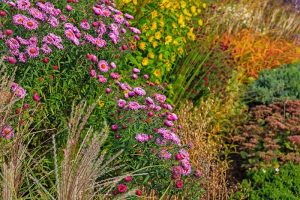Once you begin looking into edible flowers, you realize there is an amazingly abundant variety of perfectly palatable blooms.
I’m no cook, but I’ve been caught nipping a tiny colorful snack off of plants I find here and there while hiking in the mountains. A surprising number of the blooms you find in gardens can also be found along the trail.
Roses, strawberries, bluebells, and violas are among the tasty, colorful treats I sample – before the berries are ripe, that is.
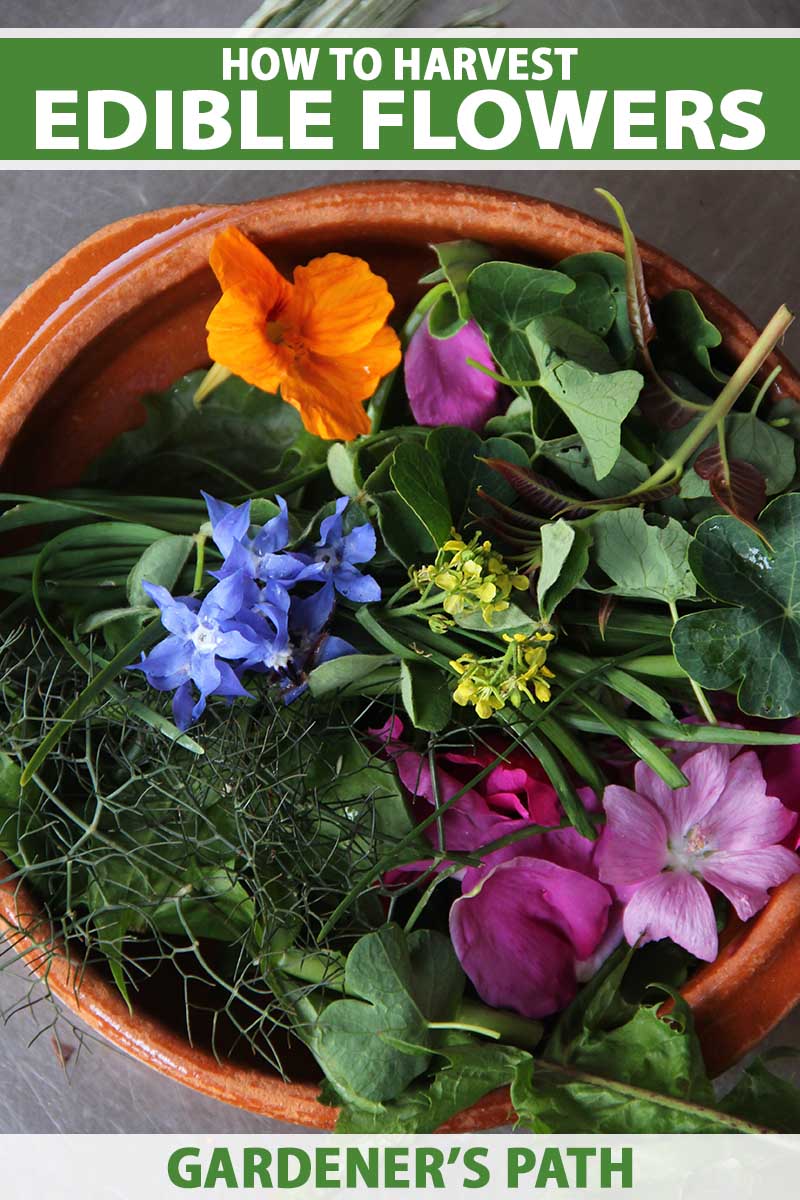
We link to vendors to help you find relevant products. If you buy from one of our links, we may earn a commission.
When it comes to harvesting these delicacies, though, there are a few things to know to have a good petal-chewing experience.
To find out how to decide when and how to harvest, plus some storage details if you’re in the vicinity of a fridge, keep on reading!
This is what we’ll cover:
What You’ll Learn
Edible Flower Considerations
When you are considering harvesting flowers to eat, there are a few things to keep in mind before biting down on the pretty petals.
Make sure you’re positive on the plant identification. Not all blossoms are edible!
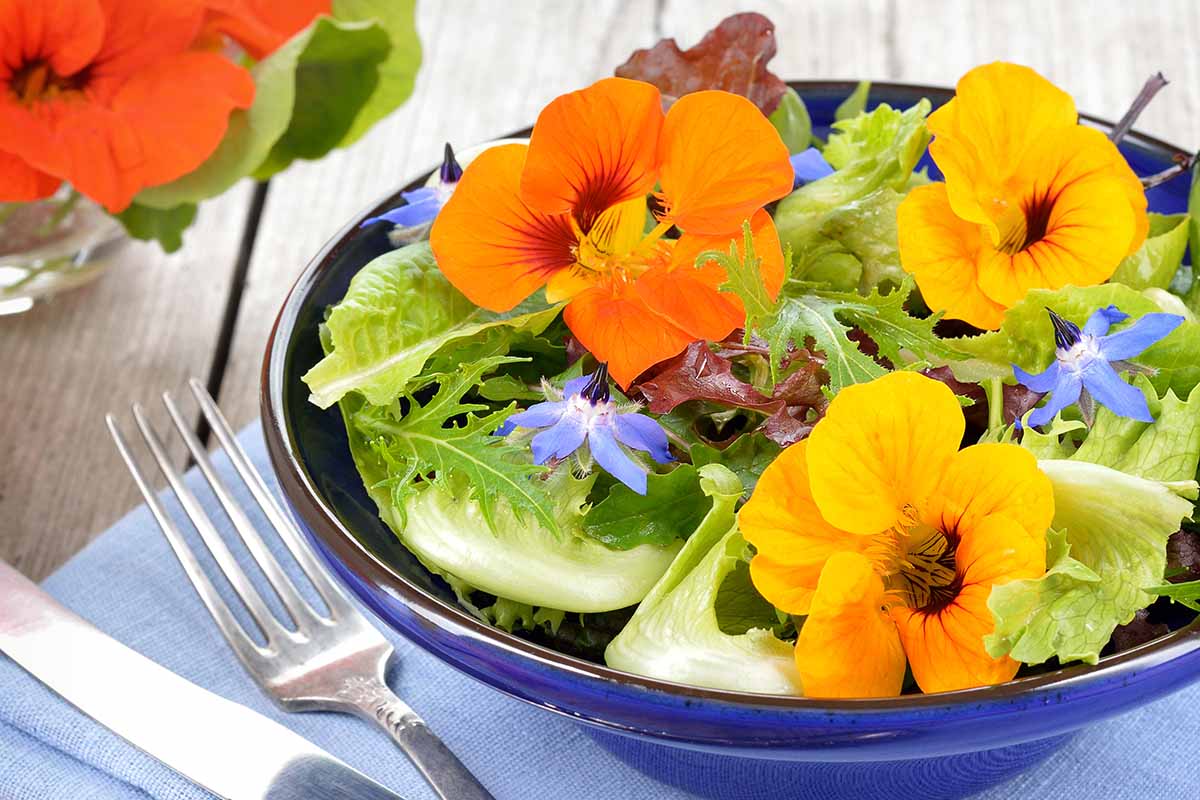
Harvest from plants that have not been sprayed with chemicals. Don’t eat petals off the bouquet your valentine got you at the florist’s, or picked for you from the roadside, or bought for you at a garden center.
Don’t eat whole blooms if you have pollen allergies!
Before you buy or harvest a bunch, when you intend to use them for edible applications, try a sample to make sure you like the taste and to confirm that they are at their prime, ready to be harvested and enjoyed.
Plus, be sure to inspect the blooms for bugs before you harvest.
Blossoms that are damaged before you pick them won’t keep their shape or look pretty after you harvest, so only select perfect blooms if you plan to use them as an aesthetic garnish.
When to Harvest
Speaking of the prime time to harvest, how do you know when they are ready to be picked and used besides taking a nibble?
They should be blooming, fully open, and not underripe – still unfolding from their bud, for example – or overripe – like they are just before fading. Picking flowers to eat isn’t meant to be an alternate form of deadheading!
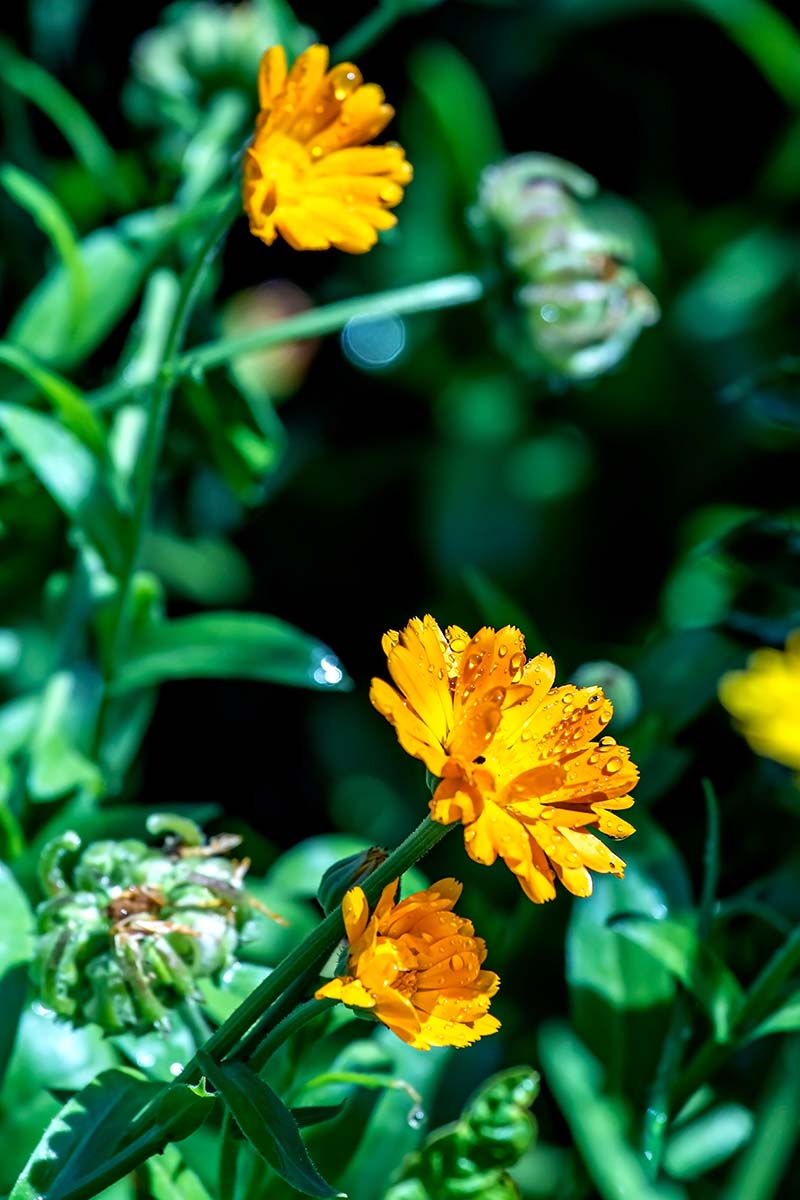
Plan to harvest during the cool parts of the day so they don’t wilt immediately after removal. Morning is the best time of day, when plants are turgid and fresh. At this time, they also contain the maximum amount of scent and flavor.
Wait until after the dew has dried to make sure the delicate petals don’t stick together.
Harvesting and Processing
Harvesting how-to’s depend on the type of bloom.
The entire flower heads of some plants, such as dill or fennel, can be harvested and used. For others, like roses for example, pick off the petals individually.
Lavender florets can be picked off the stem directly as well. Nasturtiums and viola blooms can be cut just below the flower with a sharp pair of scissors or by pinching with your nail.
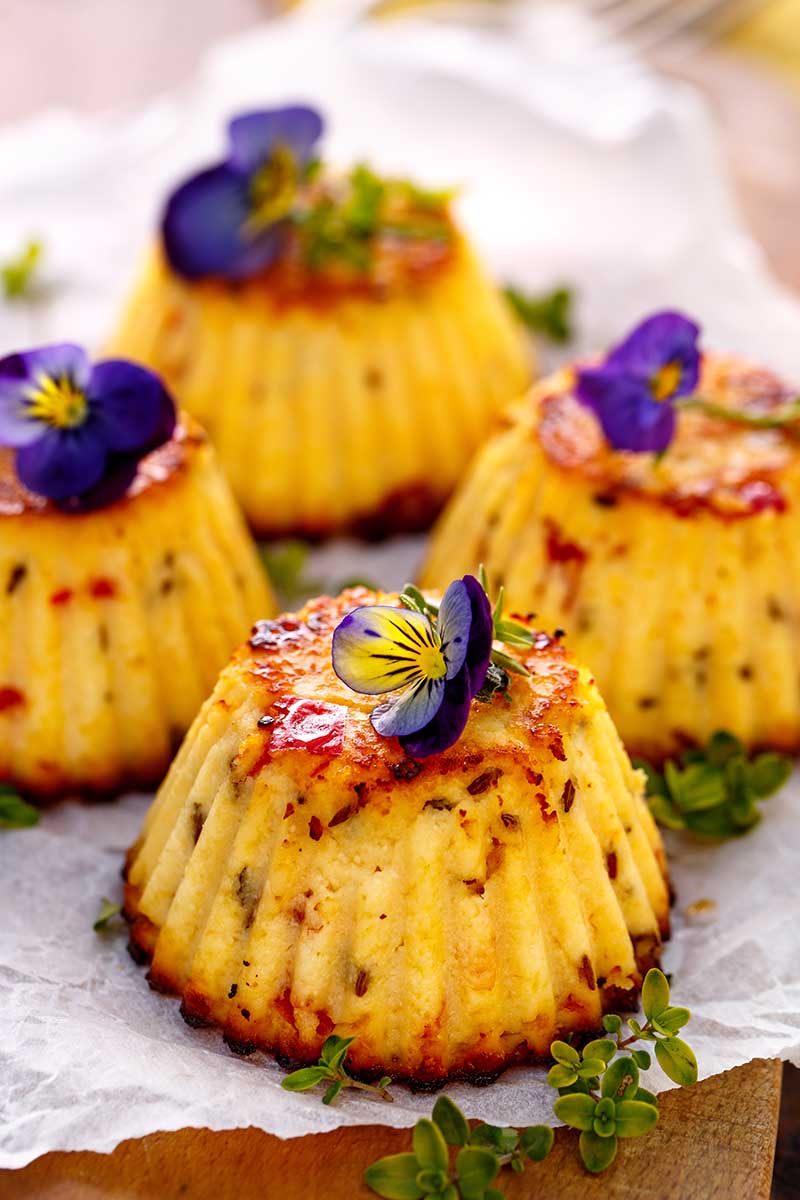
How you harvest them also depends on what you plan to use them for. For example if you are planning to pluck blossoms to decorate a cake, making sure the blooms are still intact is important!
If you plan to dry the flowers to use in teas, however, they may not need to be as picture-perfect.
Some, such as male squash blossoms, nasturtiums, and clover can be eaten whole. However, with most, the edible, delicately flavored portion is going to be the petals.
The rest of the flower parts, including stamens with their pollen and pistils, should be removed to improve the taste.

The sepals, or green petals at the base of the bloom, are often bitter. These can be removed for a better culinary experience.
The white base of petals, such as what you see on rose petals, can also be bitter, so you can choose to cut these off as well.
Storage
Once harvested, check for dirt. Dip the blossoms or petals in a bowl of cool water to rinse off any dirt particles.
Don’t use a salad spinner to dry them – they are much too fragile! Instead, lay them out to dry on a paper towel.
It’s best to use the blossoms as soon as you can after picking. But you can store them for up to a week by lining a basket or container with moist paper towels to keep the humidity up, laying the flowers on top, and popping it into the fridge.
Avoid plastic bags for storage. They can be crushed, stick to the bag, or stick to each other.
If your flowers wilt, they can sometimes be revived by letting them float in an ice water bath for a few minutes before using.
You can also dry them in a dehydrator or a low oven for use in herbal tea blends.
Using Edible Flowers
There are so many ways you can use edible flowers in your cooking, baking, or just sitting in your backyard, trying a taste here and there or sipping on a cool drink.

Add them to salads or garnish pizza after it comes out of the oven, freeze them in ice cubes to add to drinks, or beautify your baking.
Think garnishes, frying, stuffing, jams, jellies, marinades, dressings… the list of possibilities is extensive!

To make your own sugared flowers at home for decorating confections, learn the easy method on our sister site, Foodal.
If you’re having trouble deciding when to use one and where to use another, have a nibble and let your palate tell you if it’s best suited for savory dishes, like chives and calendula are, or for sweet treats, like pansies and lavender.
For inspiration on which to try and how to use them, scroll through our guide to edible flower species.
Floral Fodder
Harvesting edible flowers may not be how you envisioned spending early mornings in your garden. Or maybe it was.

The task itself is a great break from weeding, and when you can wow your family and friends – or even just your own taste buds – with your creations, it all becomes worth the extra pluck here and snip there.
Have you ever grown or used edible flowers before? Which did you grow and how did they taste? Let me know how you used them in your culinary ventures in the comments below.
Plus, read more about about edible flowers in these guides next:
